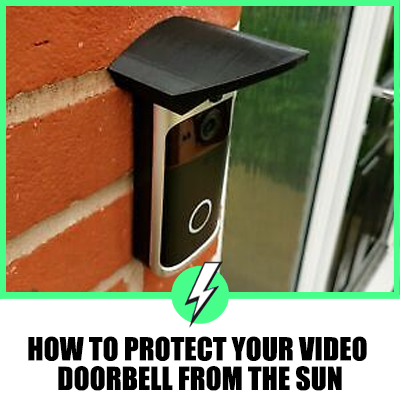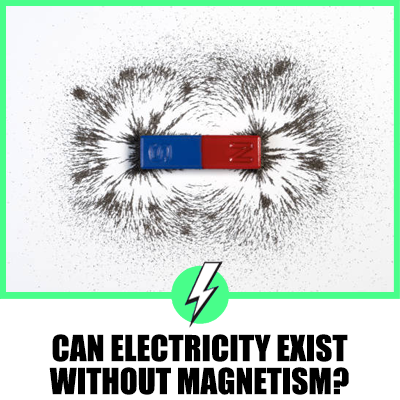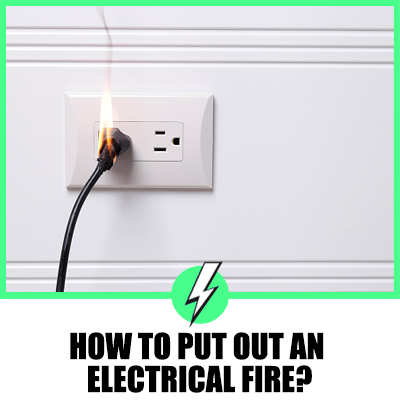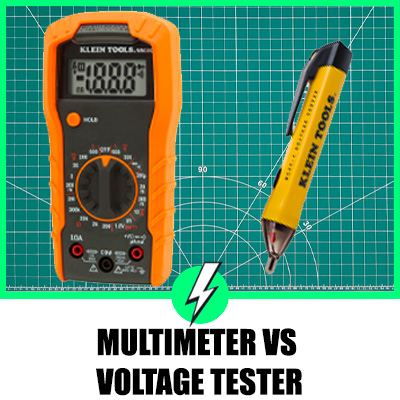How To Protect Your Video Doorbell From The Sun
Continuous sun exposure is bad for your video doorbells. You should save them before the problem escalates and leads to any malfunctioning.

Weather can be unpredictable, and you can’t do anything but adopt measures that can save your smart doorbells from the erratic behaviour of nature. Nowadays, sun rays are causing many problems with video doorbells, especially Ring users who constantly complain about cracked bell buttons due to temperature fluctuations.
That’s why knowing the ways to protect video doorbells from the sun’s rays becomes vital. But don’t worry if you have no idea how to tackle the issue. We’ve got your back, so let’s dive in!
Contents
Why Does Your Video Doorbell Need Protection From The Sun?
Extreme temperature can render your video doorbells useless, be it heat or cold. Even if they are designed to survive temperature fluctuations, little can be done when the sun glares directly on the lens and ends up heating the internal components.
This issue is quite prominent in Ring Video Doorbells, and if you own one, then extra care needs to be taken to ensure it’s well-protected from the sun. Direct sunlight has damaged many Ring Video Doorbells, and if you don’t want yours to meet the same fate, then due protective measures must be taken.
If you think we’re exaggerating the problem, see how direct sunlight can affect your video doorbell below.
1. Overheating Damages Internal Components
Overheating due to continuous sun exposure can damage the internal components of video doorbells, no matter what brand of video doorbell you own, be it Ring Doorbell or Nest Doorbell.
Even though video doorbells are designed to disperse heat, that mechanism doesn’t work when external factors like continuous sunlight are concerned. Besides, if you own a Ring Video Doorbell, then according to Ring Support, continuous exposure to 45° C or 50° C heat will automatically shut down the device.
This happens to protect the doorbell from any damage caused by overheating. But doesn’t it defeat the purpose of having the doorbell in the first place? How can you possibly spot an afternoon thief if your video doorbell happens to shut down at that point in time?
Therefore installing the video doorbell in an area where sun exposure is less is a wise decision. However, we know that sometimes it won’t be possible due to the location of the house. If that’s the case with your property, we have discussed the possible ways to remedy the problem later in this article.
2. Cracking Of The Bell Button
One of the most prominent issues with Ring Doorbell, which experiences direct exposure to the sun, is the cracking of the bell button. During certain hours, let’s say 12 pm-2 pm, when the sun is at its peak, the doorbell experiences extreme sunlight exposure, leading to this cracking problem.
It’s the common woe of many Ring Doorbell users, and this happens due to shifts in temperatures from hot during the day to cold at night. And if you don’t want to face the same issue and bombard customer support with complaints, then it’s better to solve the problem before it escalates.
Although UK residents weren’t concerned about the overheating and cracking issue before, climate change has brought this concern to Ring users in the UK too. Many residents are facing the issue due to intense heat, and as such, it’s better to install video doorbells in a shady or sheltered area.
3. Lens Flaring
Most times, the video gets washed out due to sunlight, and this phenomenon is known as “lens flaring.” When the sun is situated in the direction of the doorbell, the sun glare causes backlighting issues, making it impossible to get clear video footage.
This happens when the sun is at its peak, and you should know that this issue isn’t unique to Ring devices alone. Many doorbells which are positioned westwards face the same issue. If that happens, you can’t determine who’s standing at your front door, which reduces the functionality and defeats the ultimate purpose of having a video doorbell. Hence, the doorbell must be placed carefully to remedy this problem.
4. False Motion Detection
Getting unnecessary notifications from your Ring device? Well, it’s a case of false motion detection! We aren’t kidding when we emphasise how many users get false notifications triggered by motion sensors detecting changes in energy and light patterns.
This issue is prominent in devices with PIR or Passive Infrared motion detection, and if your doorbell utilises the same phenomenon for motion detection, then it’s problematic. Whenever the sun changes its position, and the sun rays hit the lens or light bounces off the nearby material, the motion sensor gets triggered, which results in false alarms.
This usually happens at the time when the sun changes its position, and the false alarms usually get repeated during a certain fixed time only. So, next time you check the door to find no one, don’t panic and blame it on the good old sun instead.
Ways To Protect Your Video Doorbell From The Sun
Once you’ve identified what sun exposure can do to your Ring doorbell, it’s time to solve the issue. We have mentioned the easy ways to protect your Ring Video Doorbell from the sun below.
1. Install A Wedge Kit
People with westward-facing properties can’t do anything about the problems that arise from sun exposure, disrupting the normal functioning of a Ring Doorbell. In such cases, using a wedge kit is the most reasonable solution to counter this issue.
Moreover, Ring primarily advises its customers to use the same to mount Ring Doorbells. A Ring doorbell has a wedge kit, which can be adjusted between 5°-15° angle, and some are stackable too so that you can adjust the doorbell in the proper position.
A wedge kit helps angle the video doorbell at different positions to evade the sun rays that directly hit the lens. When the doorbell is used with a wedge, the problems like sun glare and false motion detection due to sun rays cease to exist too.
2. Change Default Camera Settings To High Dynamic Range
We talked about the problem of lens flaring, which disrupts the quality of video output above. But you should know that changing the default camera setting to HDR can easily tackle this issue. Although old video doorbells might not have this feature, new ones indeed do.
Video doorbells like Ring Doorbells have an HDR setting which can be easily accessed via the Ring app. The HDR setting features a higher light-dark contrast, providing excellent video output even when the sun is shining brightly.
Video quality isn’t bad under the HDR setting, and you can easily recognise whoever passes by your door with ease. So, by changing the standard setting to HDR, the backlighting issue and sun glare caused by direct sun rays can be managed easily.
3. Install A Sun Shield
Just like you never forget the sunglasses when the sun is shining brightly, don’t make an exception for your doorbell too. The device needs a sun shield, just like you need your sunglasses so that it remains protected and does its job of catching all the faces in its vicinity.
A sun shield will ensure sun rays don’t fall directly on the camera lens and hence reduce the problem of lens flaring. Now, you can either make your own sun shield by watching a DIY video on YouTube or buy one if the former feels like too much hassle. There is a wide range of sun shields available online, and you can get one that best suits your needs.
4. Change The Video Doorbell
Ever heard of – “When in doubt, edit it out?” Well, you won’t be editing anything here, instead upgrading your old Ring doorbell to a new one. If you have a budget, upgrading your old doorbell will provide additional protection against the sun.
As old video doorbells aren’t equipped with features like HDR or overheat protection, upgrading them to newer ones would be ideal. People with an old Ring doorbell should upgrade it to Ring Pro as it features advanced motion detection, which fends off the problem of false motion detection. It also doesn’t set off false alarms and prevents issues caused by sun glare on the doorbell lens.
Final Remarks
The almighty sun can be a glaring issue for the survival of our video doorbells. Thus, to ensure their normal functioning, due measures must be taken to avoid exposure to sunlight. Direct sunlight on the doorbell lens causes overheating of internal components, damages the bell button, provides poor video output due to lens flaring and sets off the motion sensor.
However, installing a wedge kit or a sun shield and other measures mentioned in this article can help remedy the problems caused by sun rays. So, you should do the needful to ensure the proper functioning of your video doorbell.





